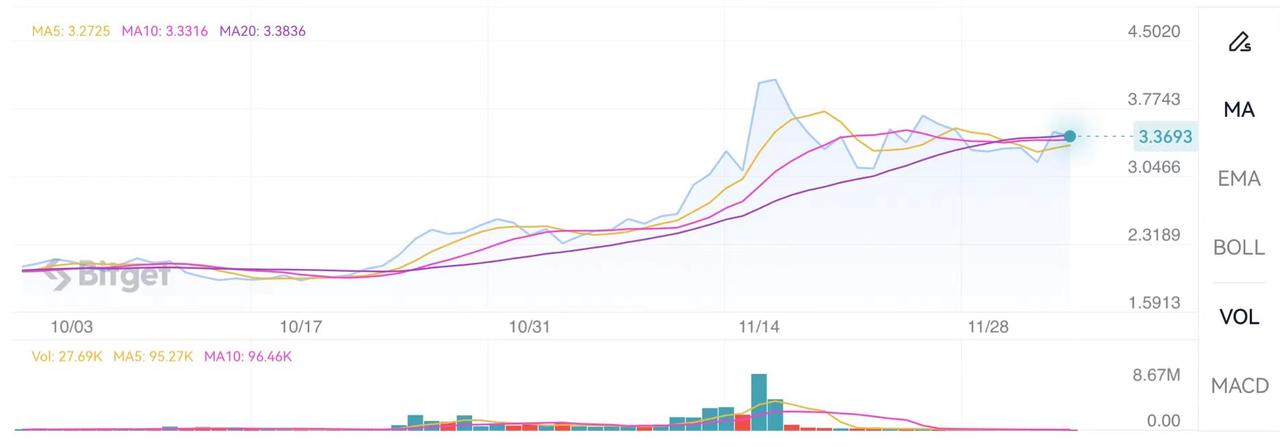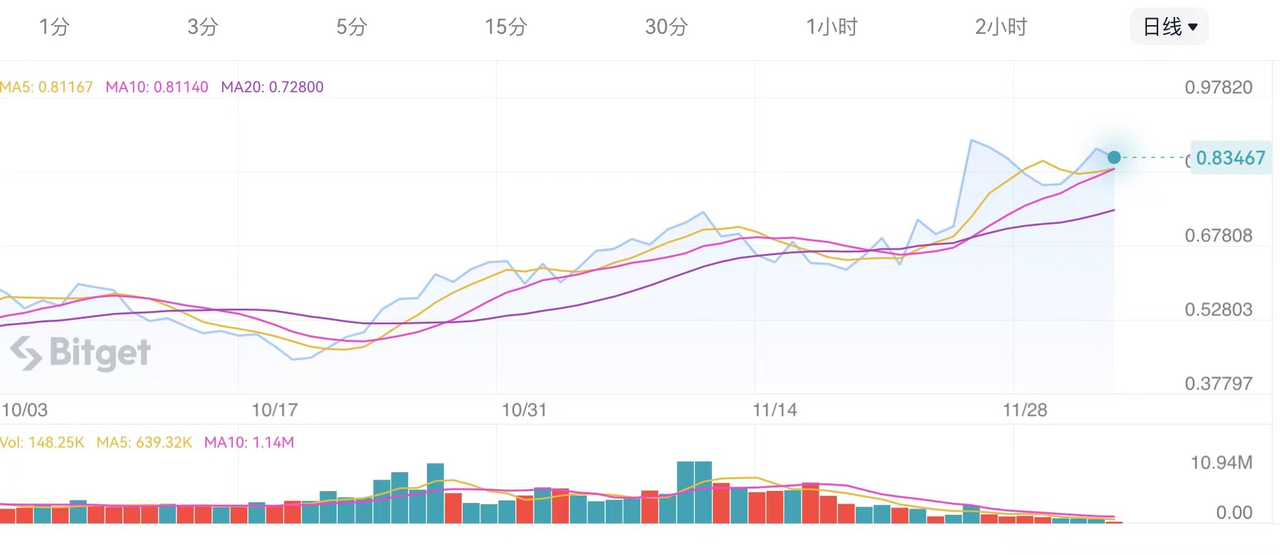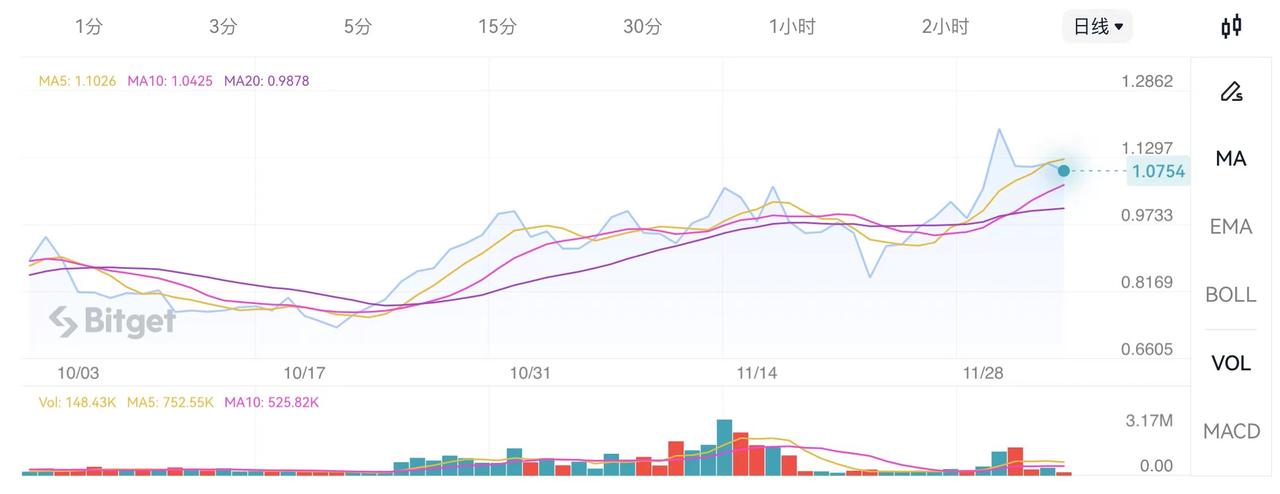An overview of self-built public chain projects that convert tokens into Gas Tokens: from DYDX to MAGIC
In the current development context of the blockchain world, the trend of project teams independently developing public chains has become increasingly evident. This not only greatly enriches the usage scenarios of their own tokens but also serves as a key driving force for tokens to upgrade to Gas Tokens. This strategic transformation fundamentally expands the scope and influence of tokens, evolving them from mere value carriers into the core driving force of the entire ecosystem.
The significance of this shift is profound, marking the diversification and deepening of token functions. Tokens are now not just mediums circulating in transactions; they have become key elements in driving project development, innovation, and achieving project visions. These tokens, used as Gas Tokens in the new chain, not only ensure the operational efficiency of the network but also bring more autonomy and flexibility to the projects.
Today, we are witnessing a pivotal moment: tokens are no longer merely transaction mediums; they are becoming crucial in driving project development, innovation, and self-realization. Next, we will explore those projects that are at the forefront in this field, examining how they leverage token upgrades to Gas Tokens to enhance their ecosystems and market influence.
Representative of Token Upgrades to Gas Tokens: DYDX with Its Self-Built Public Chain
When discussing classic cases of token upgrades to Gas Tokens, the strategic shift of dYdX cannot be overlooked. Faced with the high transaction costs of Ethereum, dYdX adopted a strategy that is both aggressive and visionary: collaborating with StarkWare to break away from the Ethereum ecosystem and independently establish its own chain. The key to this strategy lies in StarkWare's technology, which enables dYdX to handle a more diverse range of transactions while maintaining scalability and low costs. This transformation not only allowed dYdX to regain a leading position in the industry but also achieved true decentralization in the blockchain field.
In building its own chain, dYdX took an important step: transforming its token into a Gas Token. This transformation is not merely an adjustment to its business model but a comprehensive reshaping of the role and value of the token. The role of $DYDX as a Gas Token goes far beyond paying transaction fees; it has become crucial for the governance and incentive mechanisms of the entire network. This shift has significantly impacted the operational efficiency and cost control of the dYdX network, greatly enhancing its ecosystem's closed-loop operational capability and long-term sustainability.
By upgrading its token to a Gas Token and building its own chain, dYdX has demonstrated practical actions reflecting a deep understanding of decentralization and market demand. dYdX's actions have garnered significant market response, with its DYDX token price peaking at 15.66% on November 15. 
DYDX Token Price Trend
This not only elevated dYdX's position in the fiercely competitive blockchain field but also set a new benchmark for the entire industry in terms of token function expansion and ecosystem building. dYdX's strategy is not just an effective response to the current market environment but also reflects insights and leadership regarding the future development trends of blockchain technology. This strategic shift signifies a mature and thoughtful direction in the application of blockchain technology and token economic models.
From Magic to FXS, More Projects Are Upgrading Their Tokens to Gas Tokens
Recently, dYdX's token upgrade to a Gas Token is just one example among many similar initiatives. In fact, this trend is spreading across the blockchain field, with more and more projects adopting similar strategies. These projects are improving their operational efficiency and enhancing their positions in the increasingly competitive blockchain market by transforming their tokens into Gas Tokens. Below, we will explore the specifics of these projects and how they apply this strategy.
Magic: A Decentralized NFT Ecosystem Based on Arbitrum
The movements of TreasureDAO are worth noting. As a decentralized NFT ecosystem based on Arbitrum, its new move is to launch the Magic token as the Gas Token for its new gaming public chain. This decision has directly driven the rapid rise of the Magic token, which increased by over 30% within a week.

MAGIC Asset Price Trend
Upon the announcement, OKX market data showed that MAGIC briefly surged to 0.8562 USDT, currently reported at 0.8439 USDT, with a 24H increase of 23.11%.
Hooked Protocol: New HOOK2.0 Proposal Sparks Attention Across the Network
The HOOK2.0 proposal put forward by Hooked Protocol reveals its keen insight into market trends.

HOOK Asset Price Trend
In the proposal, HOOK is nominated as the Gas Token in the appchain ecosystem, which not only enhances its functionality but also indicates a strategic upgrade in its on-chain ecosystem.
APE: An L2 Network Built by the Co-Founder of Optimism
Under the promotion of Optimism co-founder Ben Jones, APE is considering developing its own L2 network, ApeChain, on the Optimism Superchain, with APE or a new AC token as the Gas Token. This strategic adjustment reflects APE's response to market trends and reveals its ambitions in platform governance and revenue stream innovation.
IOTA: The 2.0 Version White Paper Has Recently Been Released
The IOTA 2.0 Incentives and Token Economics white paper has recently been released. According to the white paper, the Mana proposal of IOTA 2.0 serves as a Gas Token, representing a significant innovation in traditional blockchain economic models. This strategy aims to decentralize the verification process while maintaining the stability of token supply, demonstrating a profound understanding of blockchain economics.
FXS: Shaping into a Universal Chain Platform for Various Applications
On November 2, Sam Kazemian, the founder of Frax Finance, announced on the official Telegram channel that Fraxchain will serve as a universal Rollup platform rather than being limited to a dedicated chain for Frax Finance. This means that various applications can be deployed on Fraxchain. Importantly, FXS will serve as the Gas token for Fraxchain, participating in the revenue distribution of network sorters and being used to regulate the decentralization mechanism of sorters in future updates.
Frax Finance's initiative to position FXS as the Gas token for Fraxchain reflects its strategic layout in the blockchain network economy. This not only enhances FXS's position within the network but also provides its user base with new avenues to participate in network revenue.
The Trend of Project Public Chain Tokens Transforming into Gas Tokens Is Irreversible, and the Web3 World Awaits More Positive Changes
In summary, these cases demonstrate how blockchain projects optimize their economic models, enhance efficiency, and secure advantageous positions in fierce market competition by upgrading tokens to Gas Tokens.
As this trend evolves, it is expected that more projects will join this movement, collectively driving the economic application and innovation of blockchain technology.









